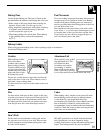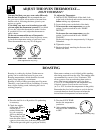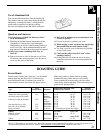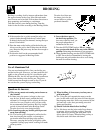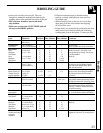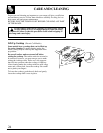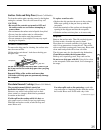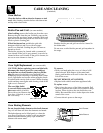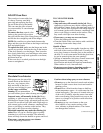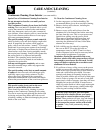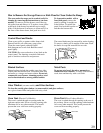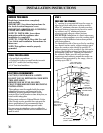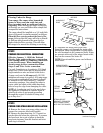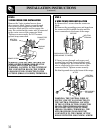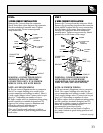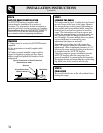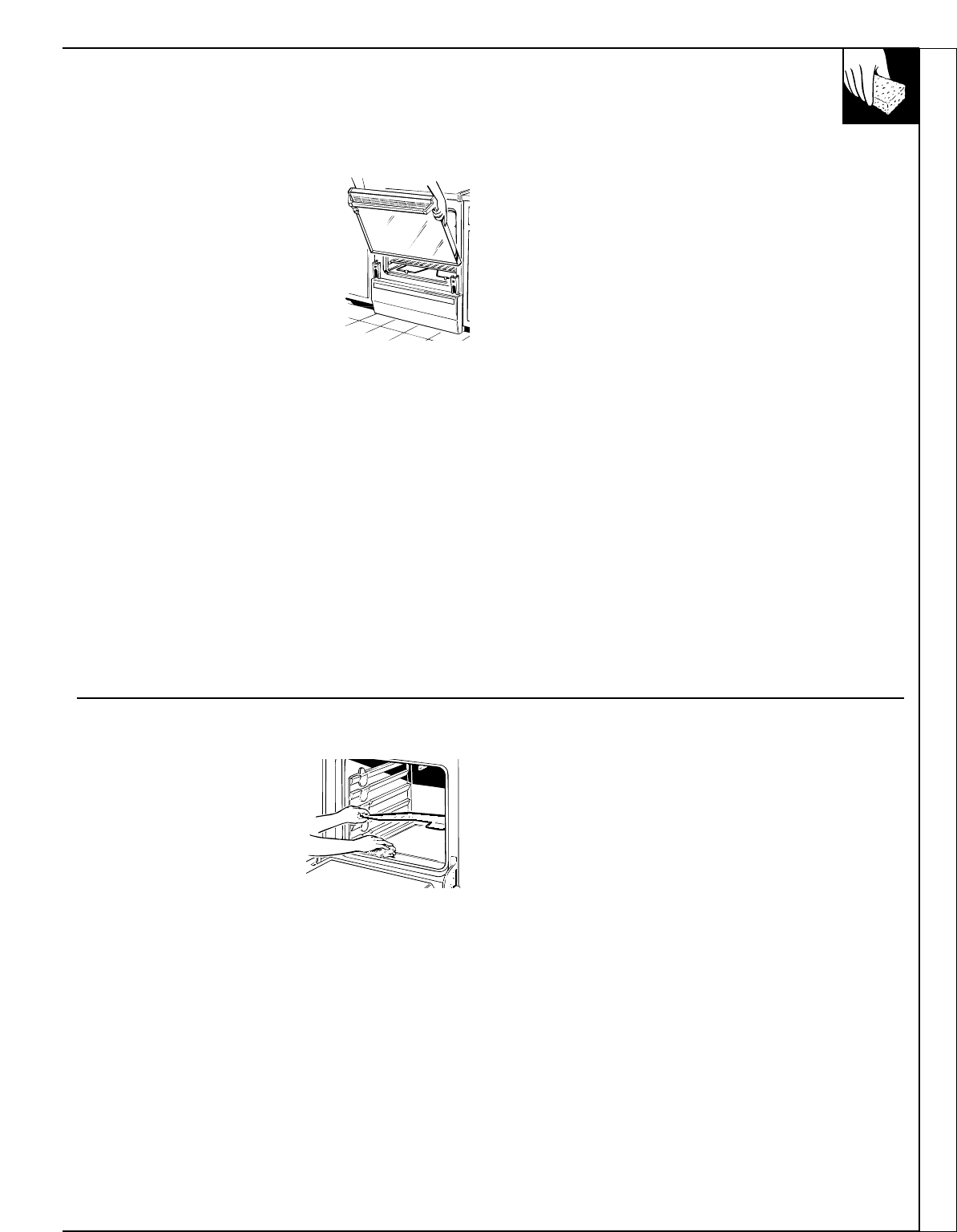
Care and Cleaning
27
Lift-Off Oven Door
The oven door is removable, but
it is heavy.You may need help
removing and replacing the door.
Do not lift the door by the handle.
This can cause the glass to break
(on some models) or cause damage
to the door.
To remove the door, open it a few
inches to the special stop position
that will hold the door open. Grasp firmly on each side
and lift the door straight up and off the hinges.
NOTE: Be careful not to place hands between the
hinge and the oven door frame as the hinge could snap
back and pinch fingers.
To replace the door, make sure the hinges are in the
special stop position. Position the slots in the bottom
of the door squarely over the hinges. Then lower the
door slowly and evenly over both hinges at the same
time. If the hinges snap back against the oven frame,
pull them back out.
If the oven door is crooked, push down on the high
corner to straighten it.
TO CLEAN THE DOOR:
Inside of door:
• Soap and water will normally do the job. Heavy
spattering or spillovers may require cleaning with a
mild abrasive cleaner. Soapy, wet metal pads may also
be used. Do not allow food spills with a high sugar or
acid content (such as milk, tomatoes, sauerkraut, fruit
juices or pie filling) to remain on the surface. They
may cause a dull spot even after cleaning.
• If necessary, you may use an oven cleaner.
Follow the package directions.
• Clean the inside of the oven window with a mild non-
scratching cleaner and a damp cloth.
Outside of door:
• Use soap and water to thoroughly clean the top, sides
and front of the oven door. Rinse well. You may also
use a glass cleaner to clean the glass on the outside of
the door. To avoid water marks inside the glass front,
do not let water drip into the vent openings.
• Spillage of marinades, fruit juices, tomato sauces and
basting materials containing acids may cause
discoloration and should be wiped up immediately.
When surface is cool, clean and rinse.
• Do not use oven cleaners, cleansing powders or
harsh abrasives on the outside of the door.
With proper care, the porcelain
enamel finish on the inside of
the oven—top, bottom, sides,
back and inside of the door—
will stay new-looking for years.
Let the range cool before
cleaning. We recommend that
you wear rubber gloves when cleaning the range.
Soap and water will normally do the job. Heavy
spattering or spillovers may require cleaning with a
mild abrasive cleaner. Soapy, wet metal pads may also
be used. Do not allow food spills with a high sugar or
acid content (such as milk, tomatoes, sauerkraut, fruit
juices or pie filling) to remain on the surface. They
may cause a dull spot even after cleaning.
Household ammonia may make the cleaning job
easier. Place 1/2 cup in a shallow glass or pottery
container in a cold oven overnight. The ammonia
fumes will help loosen the burned-on grease and food.
If necessary, you may use an oven cleaner.
Follow the package directions.
Cautions about using spray-on oven cleaners:
• Do not spray on the electrical controls and switches
because it could cause a short circuit and result in
sparking or fire.
• Do not allow a film from the cleaner to build up
on the temperature sensor—it could cause the oven
to heat improperly. (The sensor is located at the top
of the oven.) Carefully wipe the sensor clean after
each oven cleaning, being careful not to move the
sensor as a change in its position could affect how
the oven bakes.
• Do not spray any oven cleaner on the oven
door, handles or any exterior surface of the
oven, cabinets or painted surfaces. The cleaner
can damage these surfaces.
(continued next page)
Porcelain Oven Interior



